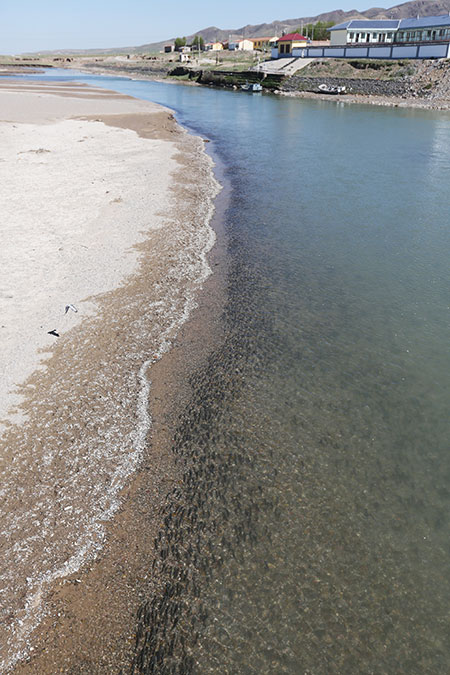|
 |
|
Flocks of cormorants nesting on Bird Island at the Qinghai Lake National Nature Reserve. [Photo by Wang Jing/China Daily] |
Ecological improvement
Lhundrub, the reserve's administrative director, said the lake's ecosystem faced many challenges before 2005 as a result of environmental changes and human activity.
They included lower water levels, aggregated desertification, the shrinking and deter-ioration of the wetlands, a fall in fishery resources and deterioration of habitats, he said.
Records show that from 1959 to 2004, the water level fell 3.78 meters and the lake's area shrank by 362 sq km. Water storage fell by 17.86 billion cubic meters.
In 2006, the central government approved a 1.57 billion yuan ($252 million) plan to strengthen protection and management of the environment in the basin. Wetland shrinkage and the degeneration of the eco-function have been curbed, Lhundrub said.
According to figures released by the Qinghai Water Resources Survey Office, the lake's water level rose for nine consecutive years before 2014, and its surface area expanded from 4,100 sq km in 2004 - its lowest ebb - to about 4,400 sq km last year.
He Yubang, an administration researcher, said: "The ecological environment of Qinghai Lake is heading in the right direction. The water level has recovered to that of the 1980s."
The Qinghai Lake Gymnocypris Rescue Center, based in Xining, said the stock of huang fish had recovered to 45,000 metric tons by the end of last year, compared with 2,592 tons in 2002.
The number of Przewalski's gazelle, a critically endangered species native to the basin region, has risen to 1,100 from 200 at its lowest point, and a conservation area has been established on the lake's north shore.
However, the rise in the water level has also destroyed many habitats. In 2004, there were five major bird habitats, adding up to more than 400 hectares. Now, only four habitats with a combined 200 hectares are left.
The administration has adopted measures, including strengthening protection of the sandy land and building artificial islands, to ease the contradiction between the reduction of habitats and the rise in the water level.
